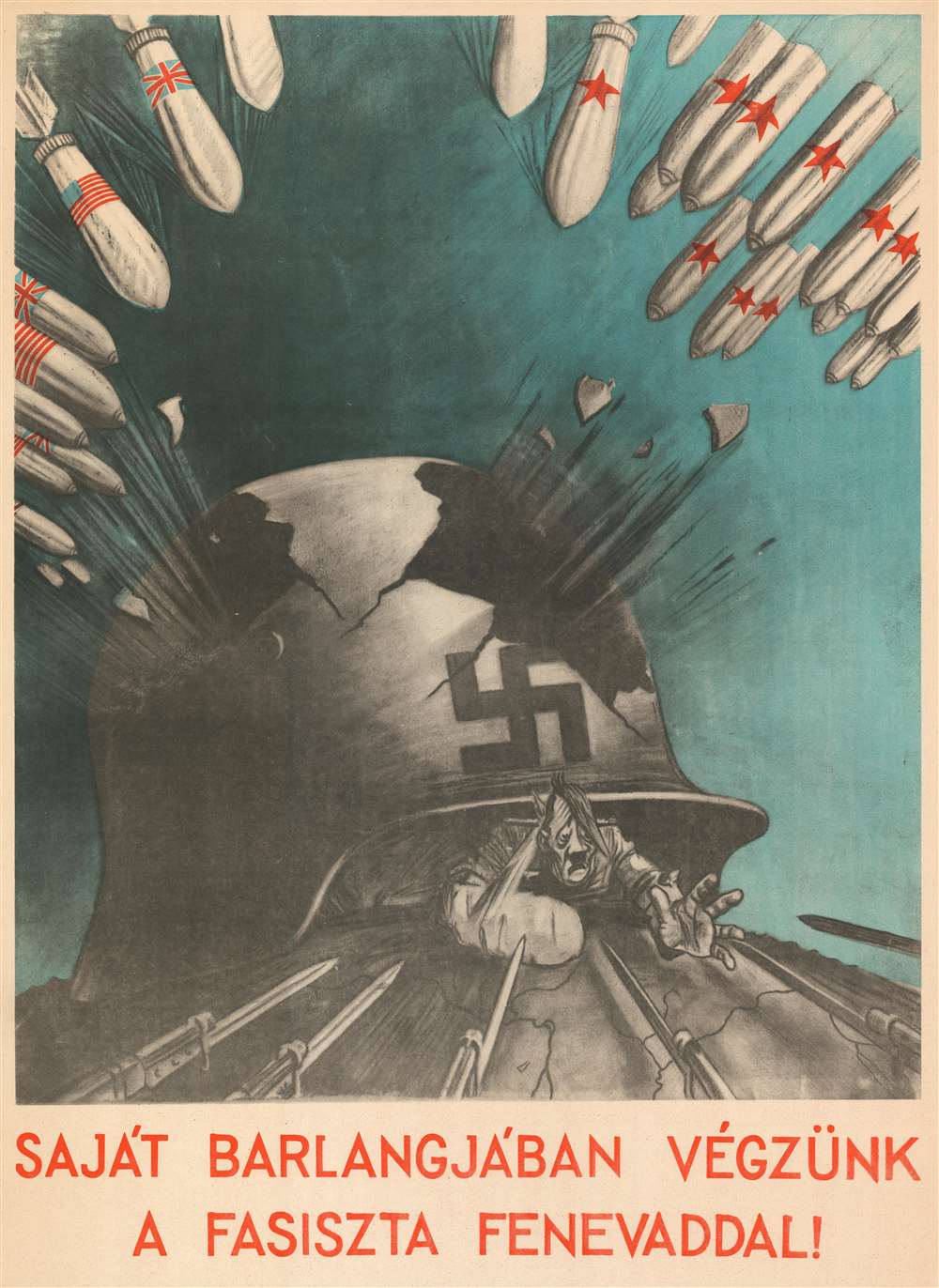
This item below is out of stock, but another example (left) is available. To view the available item, click "Details."
Details
1945 Ek Anti-Fascist Propaganda Broadside of Allied Bombs Falling on Hitler
$2,500.00
1945 Ek Anti-Fascist Propaganda Broadside of Allied Bombs Falling on Hitler
FascistBeast-ek-1945
Title
1945 (undated) 44.5 x 33 in (113.03 x 83.82 cm)
Description
Hungary During World War II
Hungary in the 1930s became increasingly linked to Fascist Italy and Nazi Germany. Hungary was even awarded territory it had lost due to the Treaty of Trianon after World War I. Eventually, under pressure from Germany, Hungary joined the Axis in 1940 and Hungarian troops participated in the invasions of Yugoslavia and the Soviet Union. When it became apparent that they had chosen the losing side, Hungary started armistice negotiations with the United States and the United Kingdom. After Germany became aware of Hungary's betrayal, German troops staged a retaliatory invasion on March 1944. The Red Army crossed into Hungary in September 1944, and a unilateral armistice between Hungary and the Soviet Union was signed in October. After this second betrayal, Nazi forces deposed the Hungarian president and installed a fascist leader, Ferenc Szálasi. Budapest was liberated on February 13, 1945, after a fifty-day siege by the Red Army.Publication History and Census
This poster was drawn by Sándor Ék in 1945. We are aware of one example in an institutional collection at the United States Holocaust Memorial Museum in Washington, D.C.Cartographer
Sándor Ék (August 27, 1902 - January 15, 1975) (a.k.a. Alex Keil) was a Hungarian graphic artist and painter. Ék, the son of a poor working-class family, spent his childhood in a suburb of Pest (Angyalföld). He became interested in socialist ideology at a young age and was a member of the Hungarian Communist Party (KMP) by the age of 16. Ék celebrated the establishment of the Hungarian Soviet Republic (the world's second socialist republic) in 1919, but it survived only 133 days. He fled Hungary after the collapse of the Hungarian Soviet Republic and ended up in Vienna. He participated in the 'Young Worker's International' in Moscow in 1921, where he met Lenin. He stayed in Moscow for some time where he studied with El Lissitzky. During this time he painted in modern and constructivist style, until he gave up these practices for the obligatory socialist realism. He also spent time in Berlin, Paris, and Amsterdam, and settled in Germany in 1925. After Hitler rose to power in 1933 Ék left Germany for the Soviet Union. Ék joined the Red Army in 1944 and was with the army when Budapest was liberated. Following Budapest's liberation, three antifascist posters by Ék, all of which predicted the defeat of Hitler's nazis, were plastered all over the city. After the war, Ék was named the director of the Academy of Applied Arts and, in 1949, he gained a teaching position at the Hungarian Academy of Fine Arts. More by this mapmaker...

